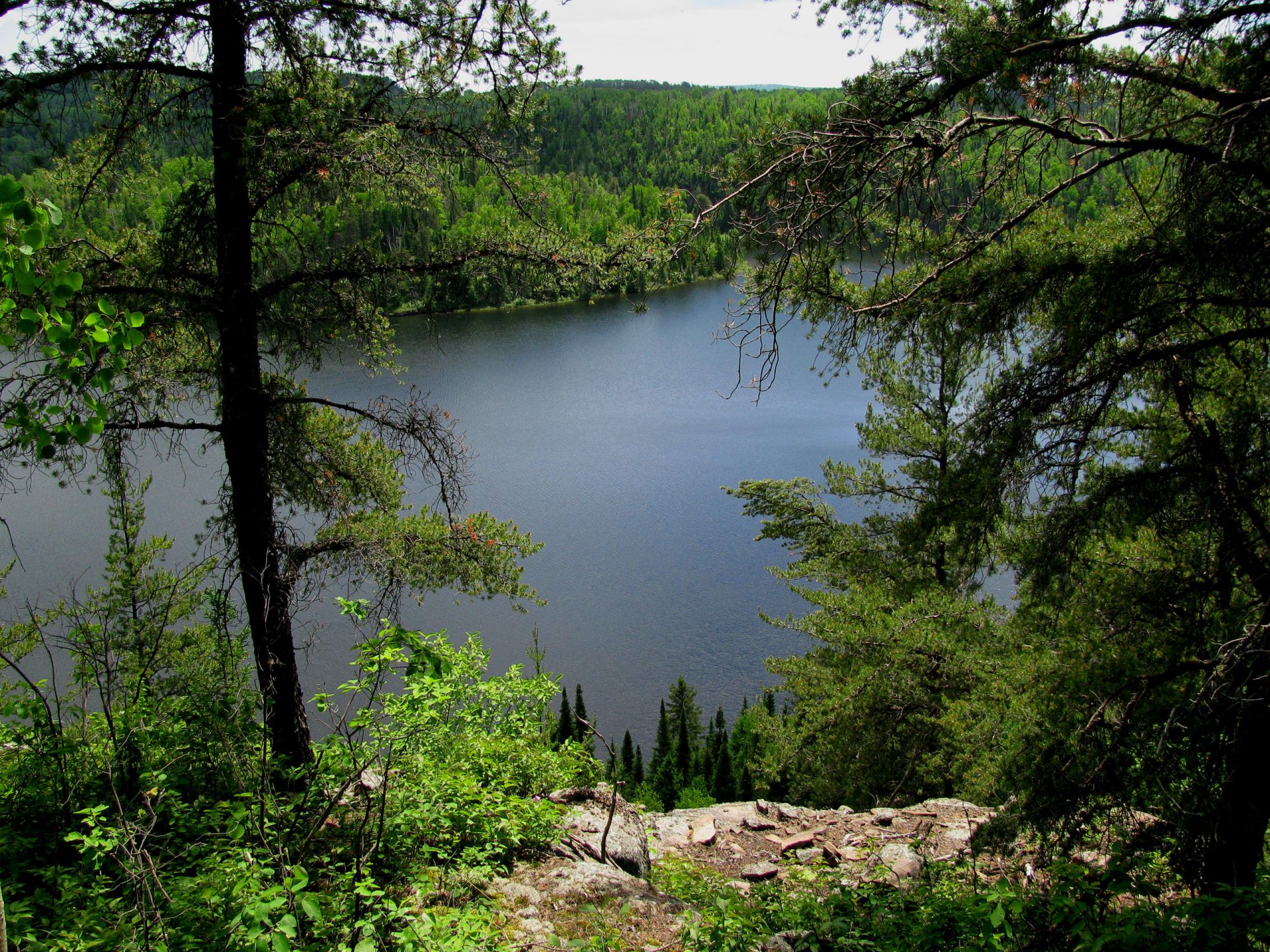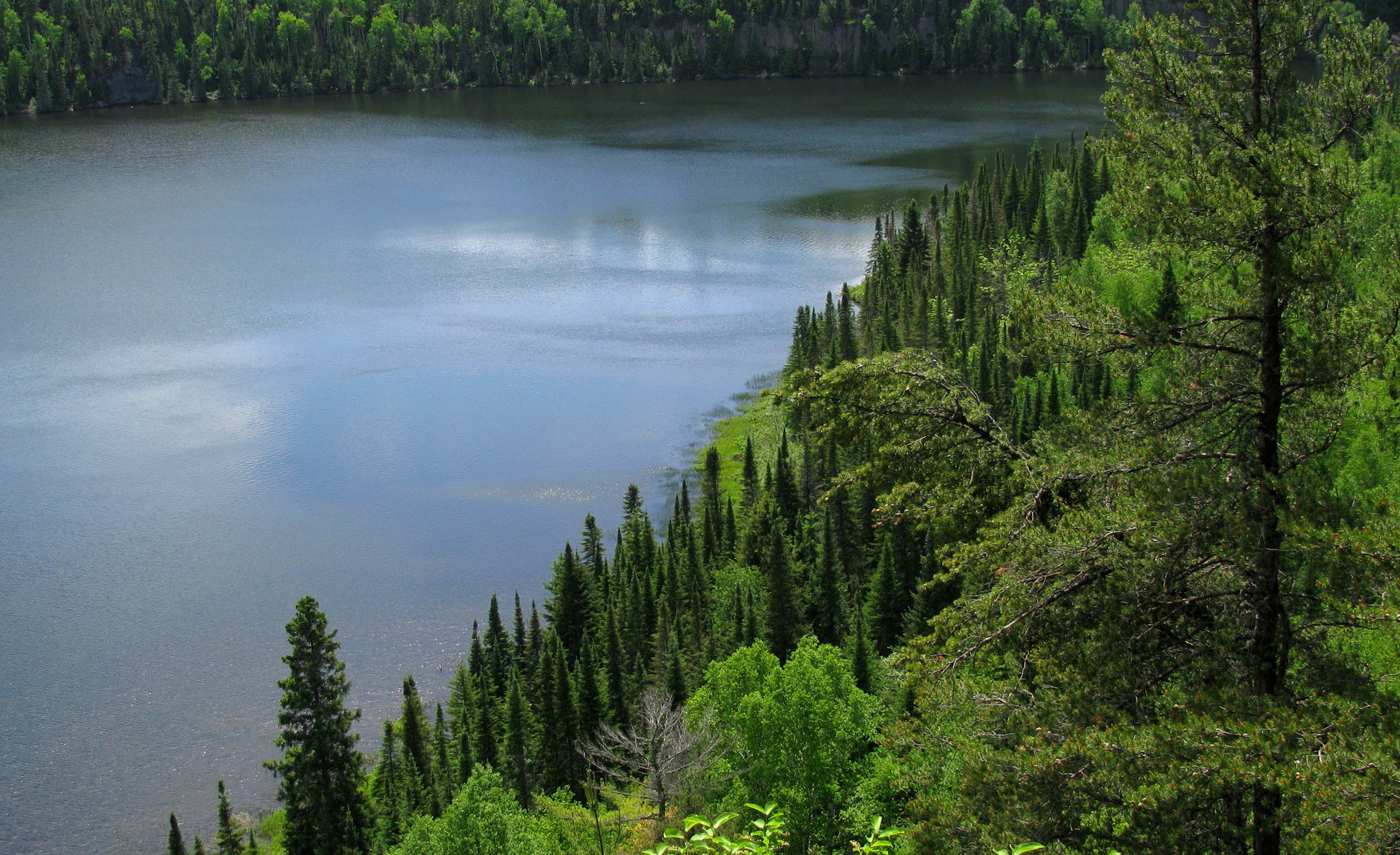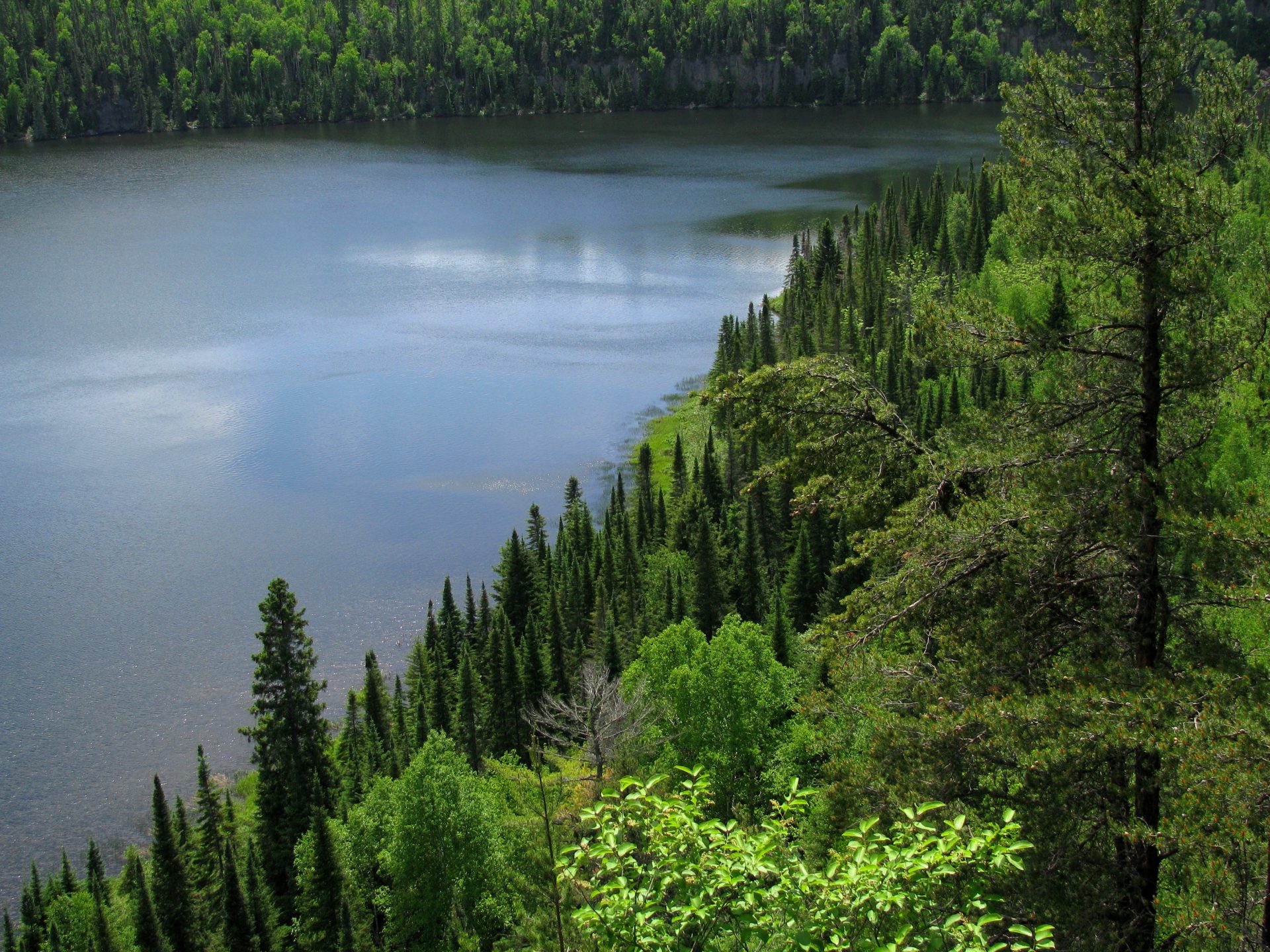Pictured Lake
The Pictured Lake Nature Reserve
The Thunder Bay Field Naturalists purchased the Pictured Lake Nature Reserve in 2008.
The Reserve consists of 108 acres of land southwest of the City of Thunder Bay. The property completely surrounds a 32 acre lake. This is a site with unique biological and cultural features. The lake is surrounded by high rock cliffs and some wetlands, with two inflow and one outflow creeks, all with beaver dams. The property is mostly mature forest with many large white pines. The Ministry of Natural Resource’s NHIC database also records the presence of a provincially rare violet, Viola epipsila, growing at this lake.

The previous owner of this property was a land developer who had already obtained permission to put a road into the site and had plans to subdivide the property into building lots. The property is not road accessible and this has been key to protecting both cultural and natural heritage features of the site. After negotiating a purchase price for this property of $170,000 we applied for a number of grants through various private foundations and government programs to help with the purchase costs and were successful in our efforts. A special thank you to the EJLB Foundation and the McLean Foundation for their generous support of this acquisition.
We do not maintain any trails on the property. Motorized vehicles, including snowmobiles, ATVs, and dirt bikes are not allowed. Hiking, snowshoeing, and nature appreciation are permitted.

“Supported by the Greenlands Challenge – a partnership funded by the Ontario Ministry of Natural Resources and administered jointly by the ministry and the Nature Conservancy of Canada to help conserve Ontario’s biodiversity”.
In 2021, Thunder Bay Field Naturalists purchased a new nature reserve property, a 116 acre parcel abutting our existing Pictured Lake Nature Reserve near Oliver Lake. This new nature reserve adds to the protection of the existing reserve. Oliver Creek, the outflow from the lake, flows through the length of the new property. The creek has many beaver ponds and dams, and interesting plants including Jack-in-the-pulpit, Bloodroot and Wild Ginger growing in the rich floodplain. Western Painted Turtle eggs were found by the stream. The property is covered with mature mixed forest which includes some large White and Red pine. At the south end of this parcel is a high rock outcrop with Jack Pine, Sugar Maple, Red Maple, Spikenard and Sumac.
Thunder Bay Field Naturalists are pleased to announce receipt of a $30,000 federal ECCC grant as a match for local donations raised for purchase of this land. Support of this project was made possible by the Government of Canada through the Natural Heritage Conservation Program, part of Canada’s Nature Fund.
The Government of Canada’s Natural Heritage Conservation Program (NHCP) is a unique public-private partnership to support new protected and conserved areas by securing private lands and private interests in lands. The program is managed by the Nature Conservancy of Canada (NCC). Federal funds invested in the program are matched with contributions raised by NCC and its partners, Ducks Unlimited Canada and the country’s land trust community.

The Pictured Lake Addition property (116 acres) was successfully purchased by TBFN on May 27, 2021. TBFN leveraged local donations raised for this land purchase to secure additional grant monies. The property has been secured with the support of the Government of Ontario through the Greenlands Conservation Partnership, which helps conserve ecologically important natural areas and protect wetlands, grasslands and forests that help mitigate the effects of climate change. Through the Greenlands Conservation Partnership, a total of $50 million will be invested over four years, including $20 million from the Ontario government, and another $30 million from other sources, such as individual donations and foundation support through the NCC and the Ontario Land Trust Alliance, and other levels of government. We wish to thank the Ontario Land Trust Alliance (OLTA) and the Government of Ontario for their generous support of this important conservation project.





